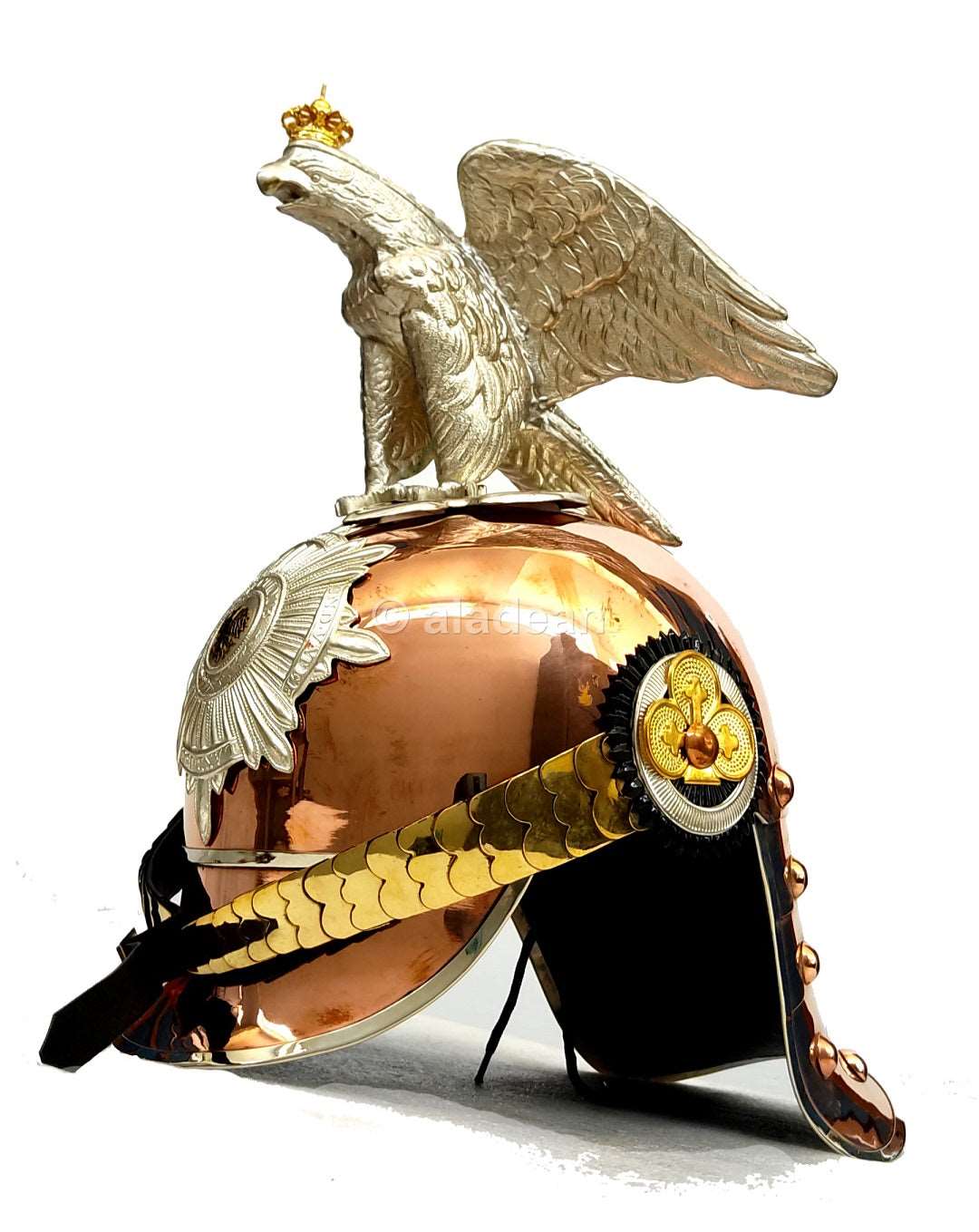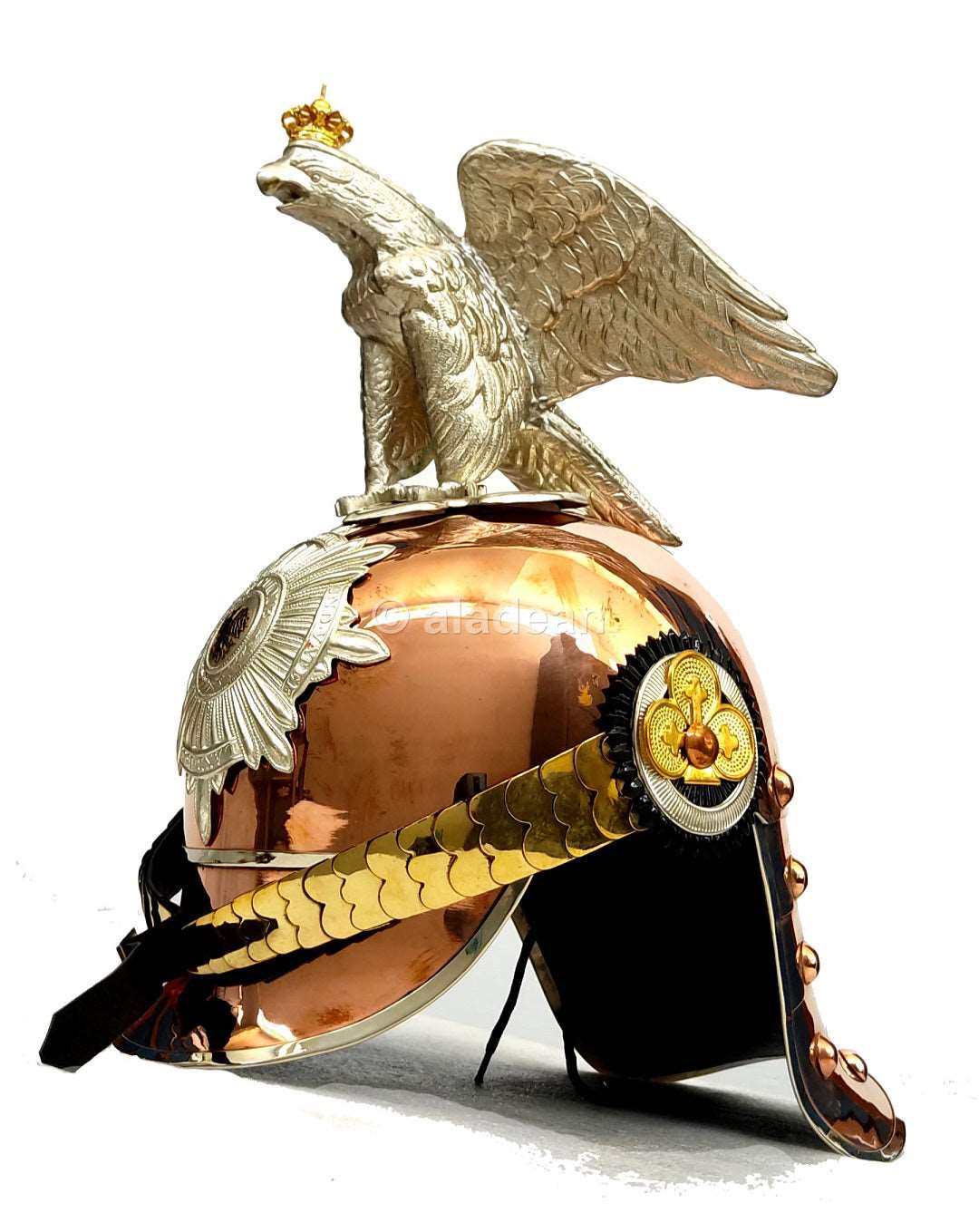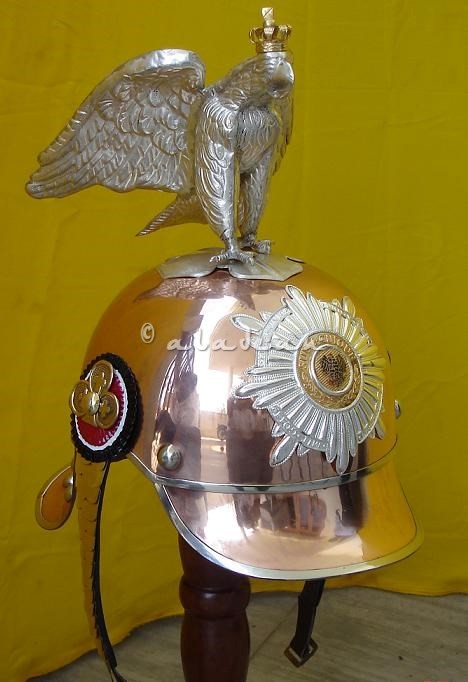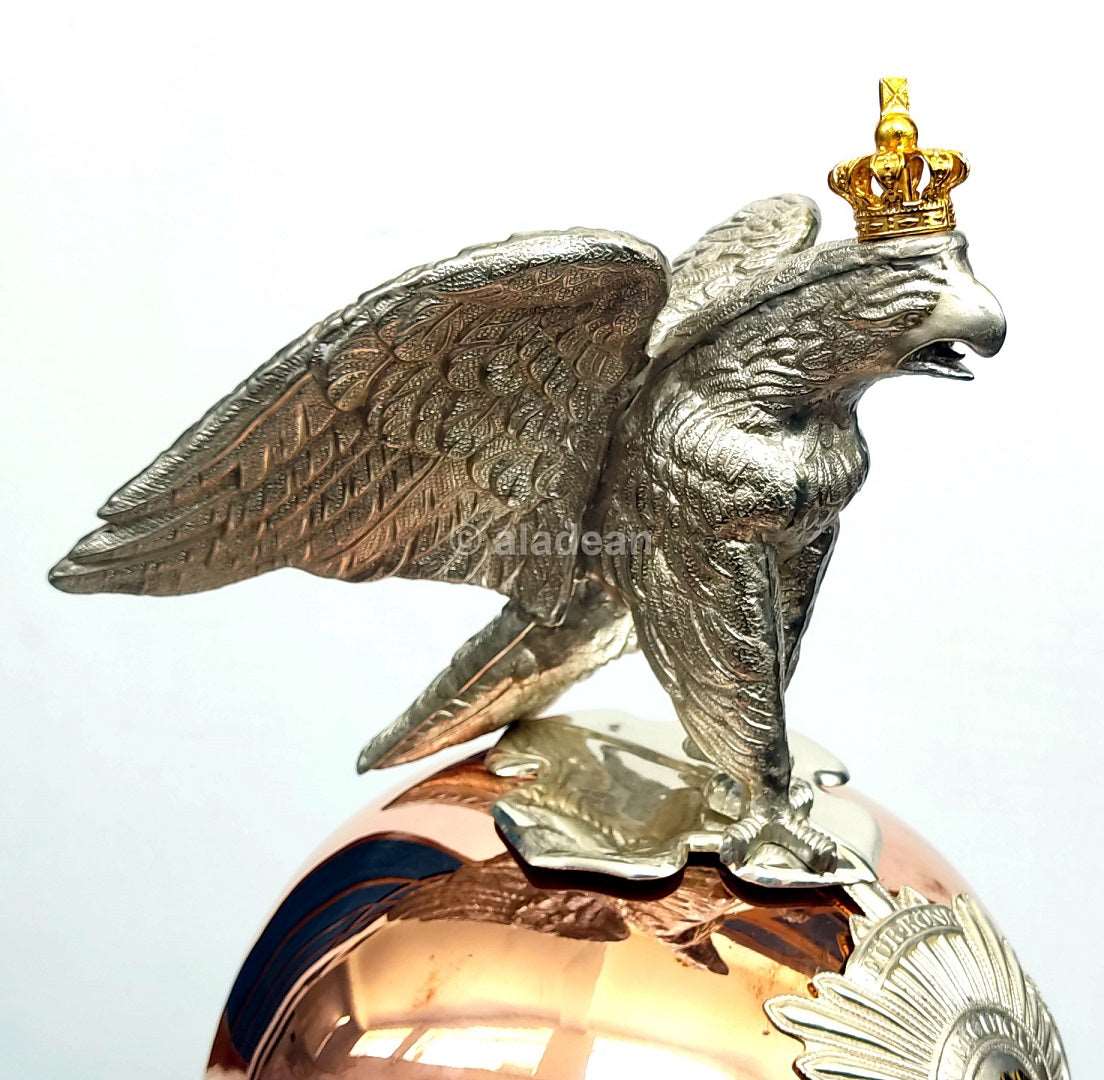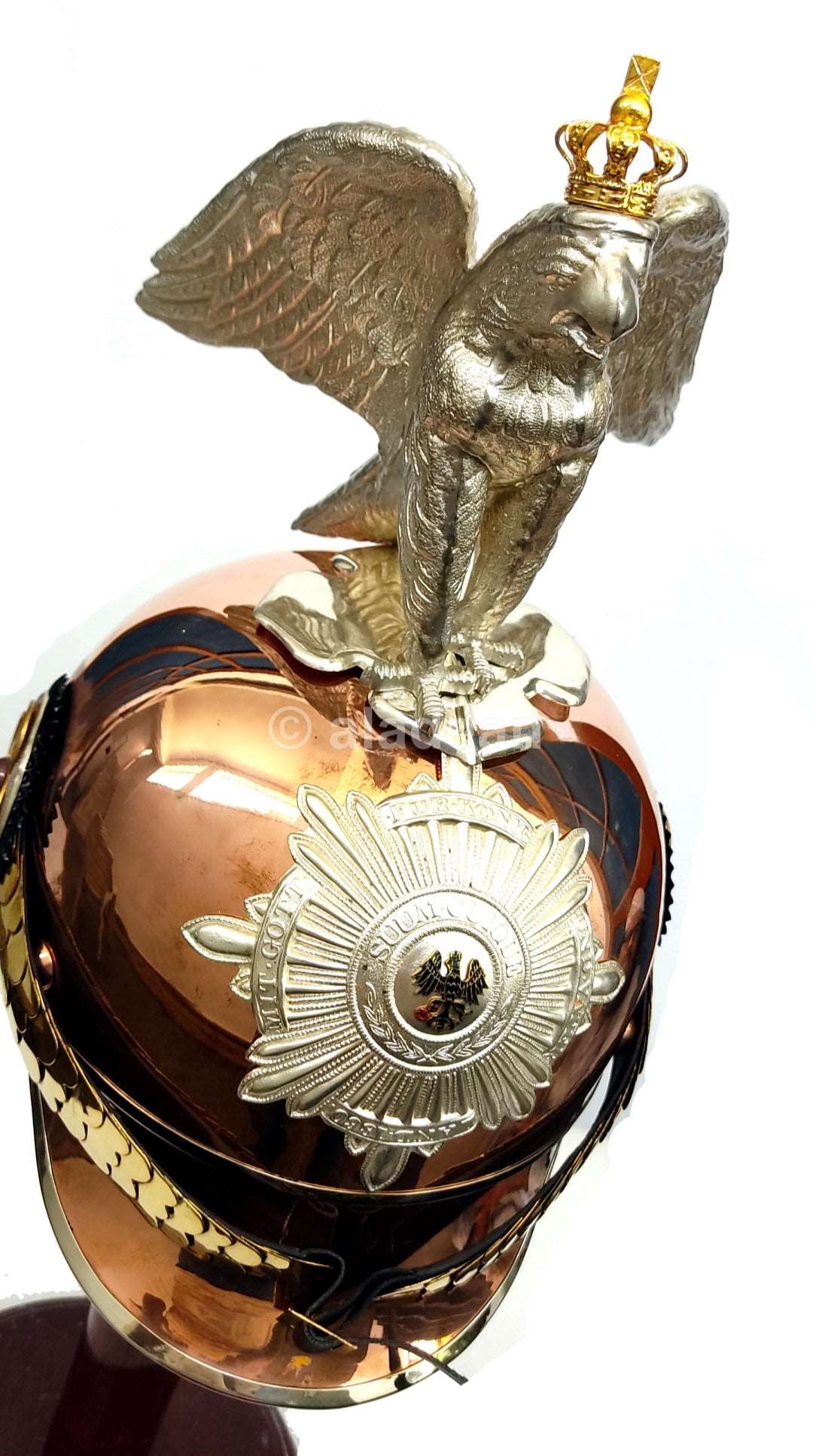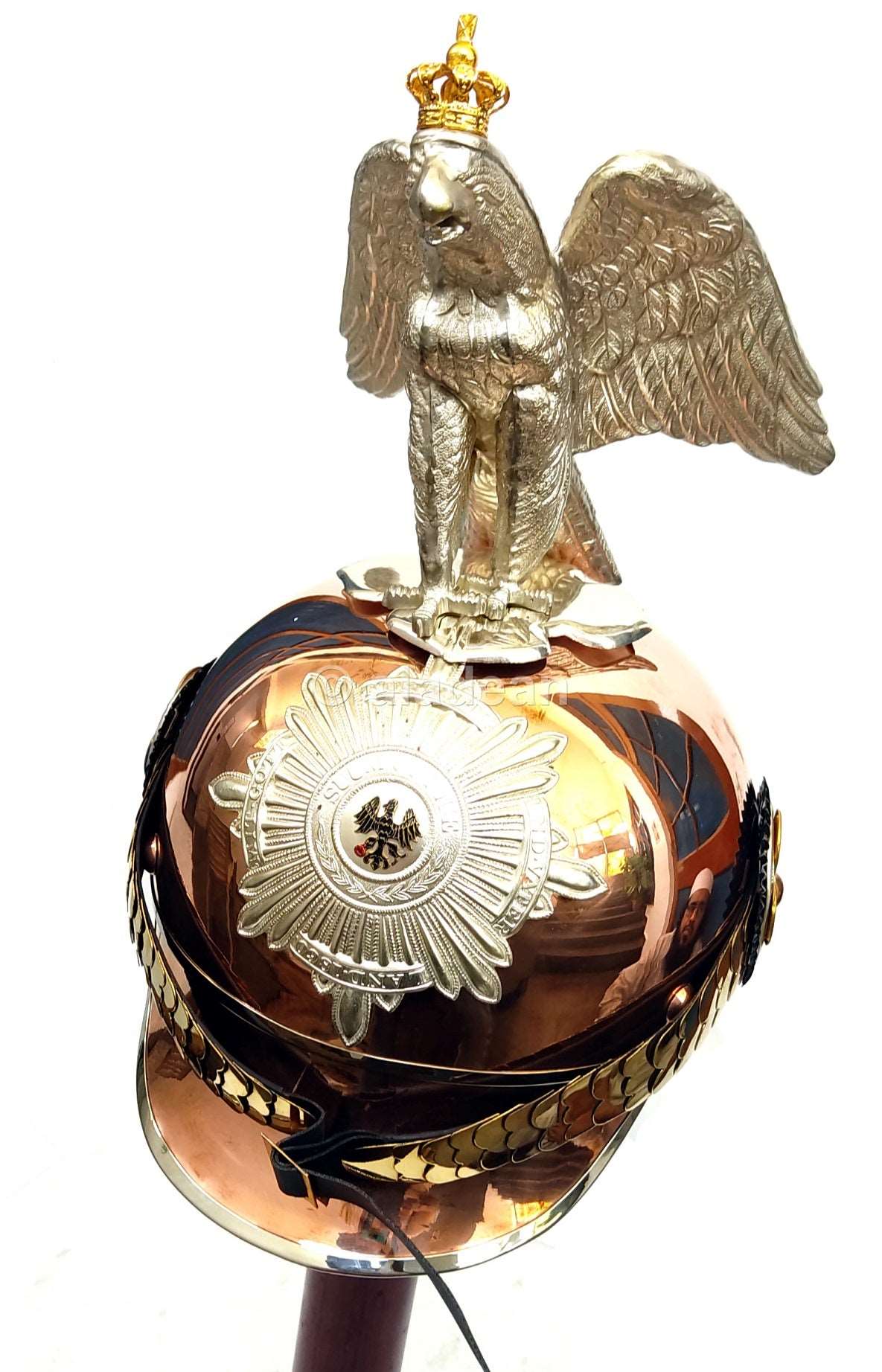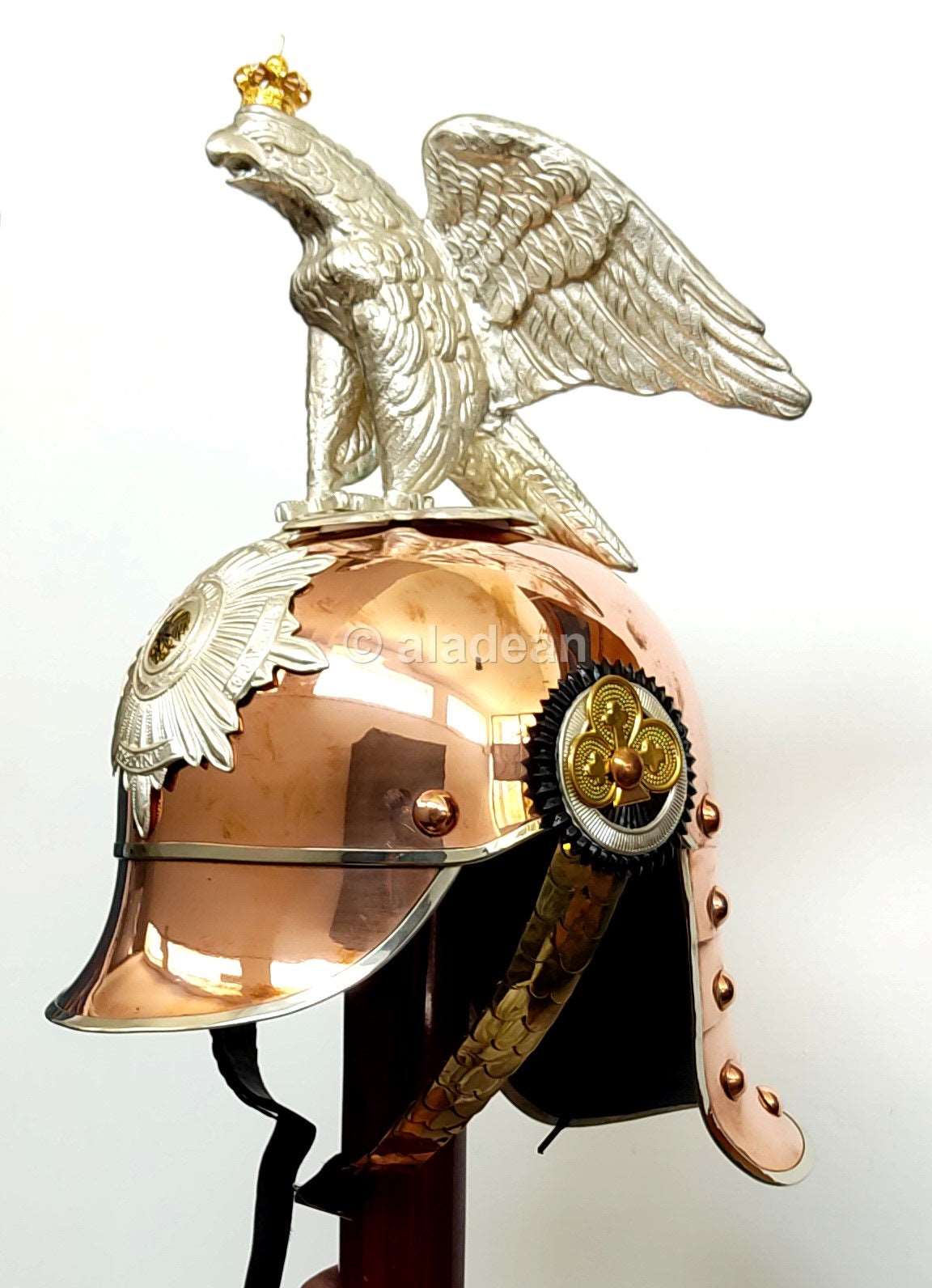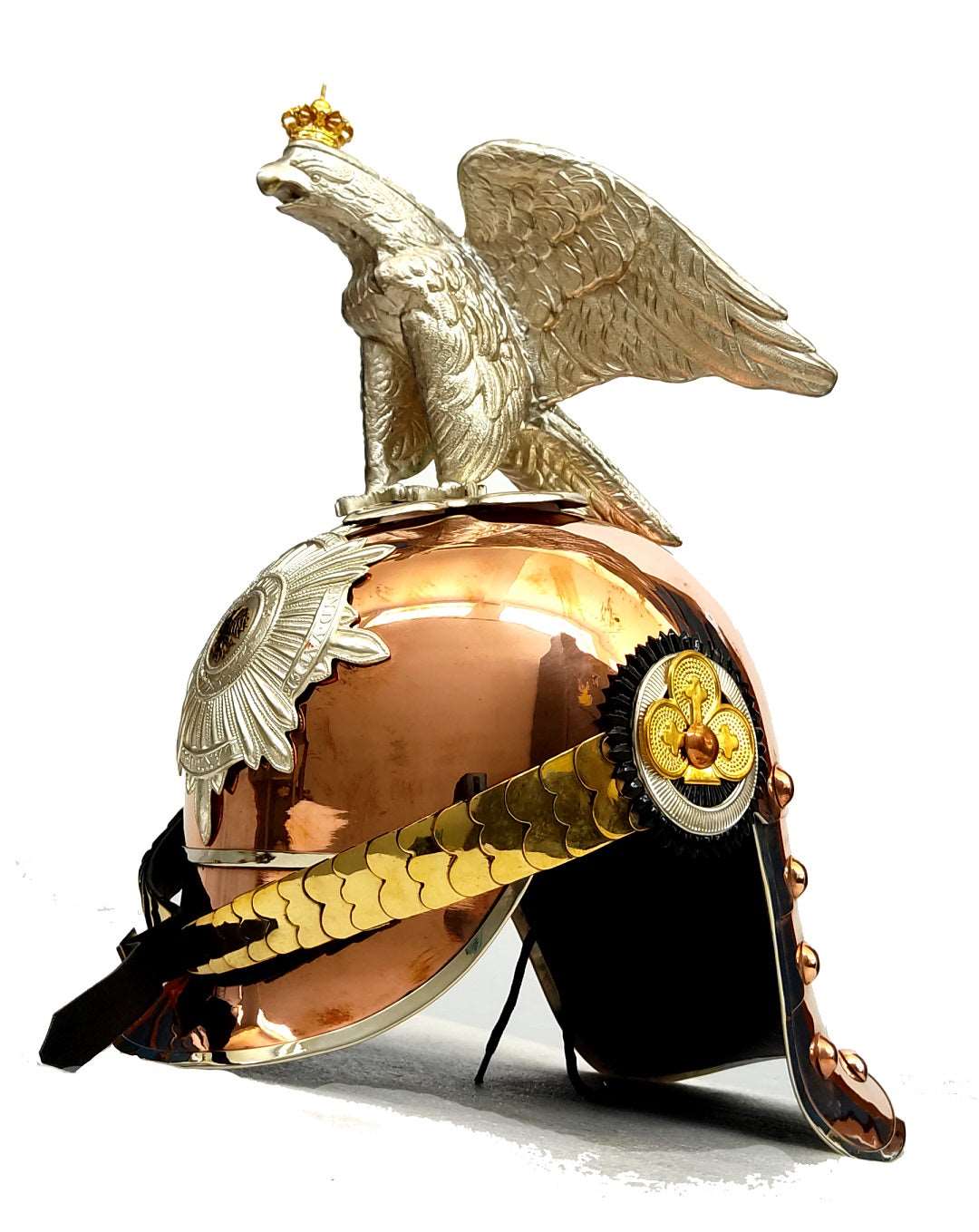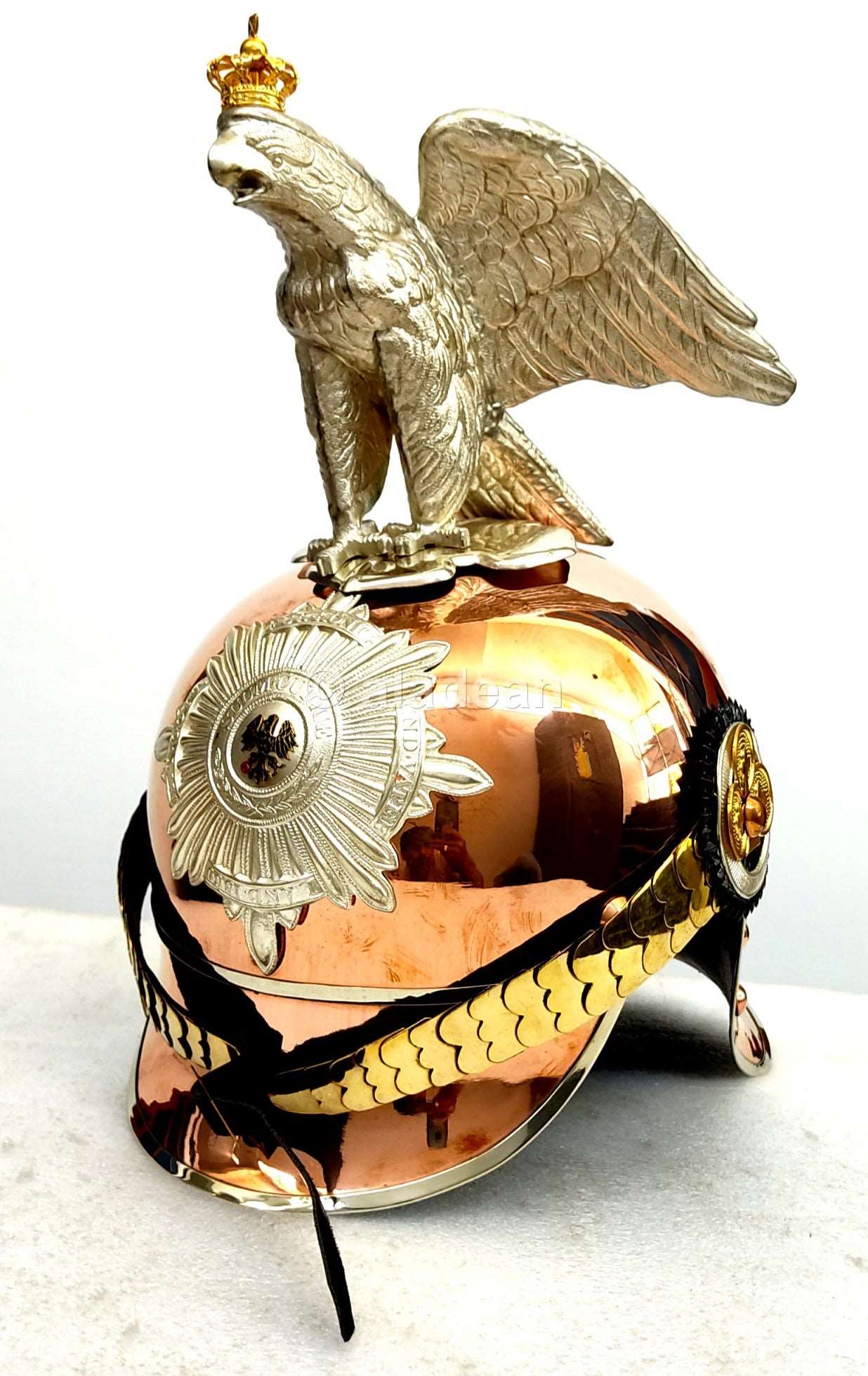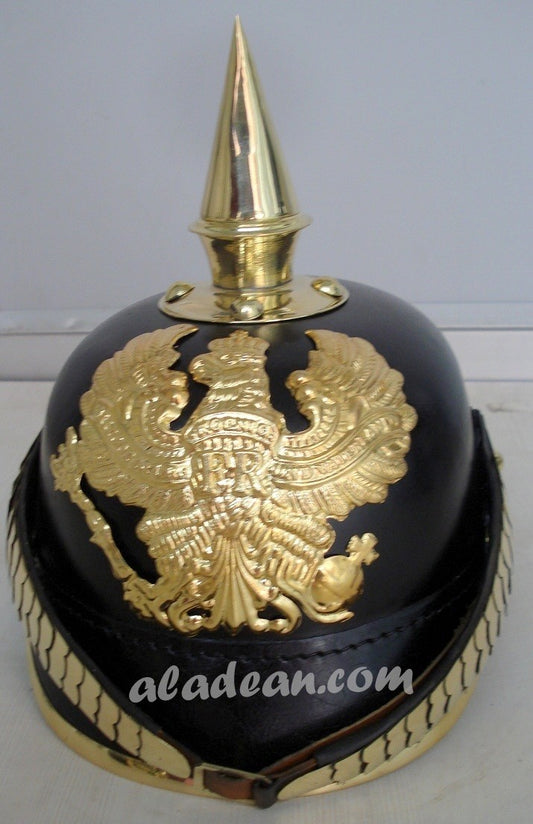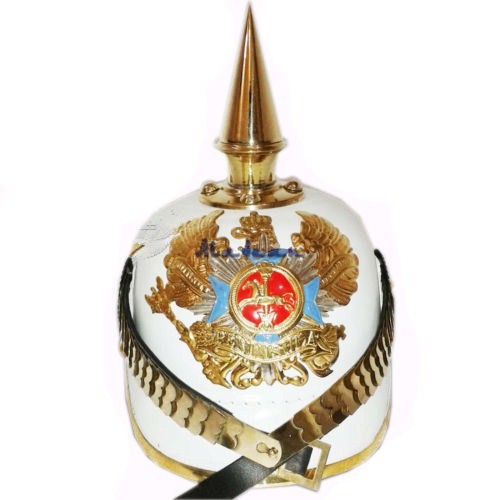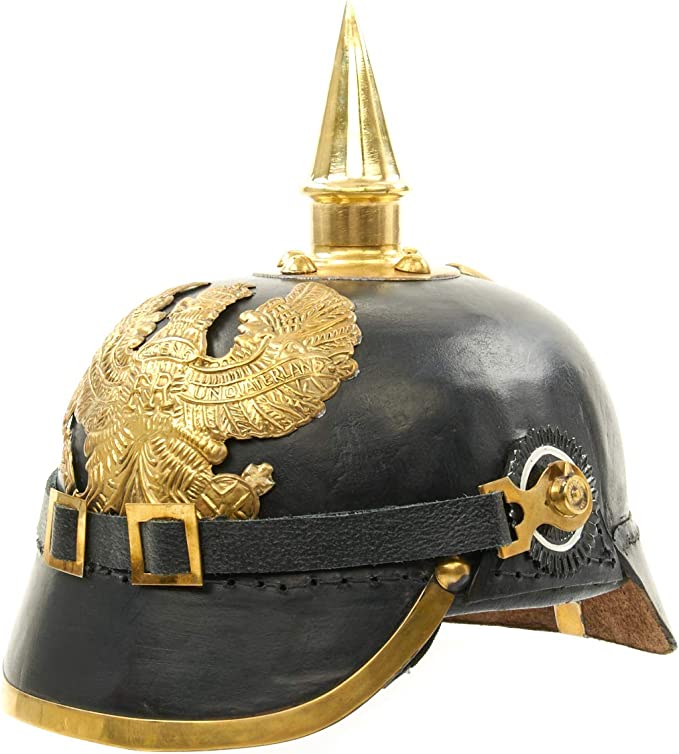
Unveiling the Legacy of Pickelhaube Helmets: A German Icon of History and Heritage
Share
In the annals of military history, few artifacts evoke the same sense of nostalgia and reverence as the Pickelhaube helmet – the iconic headgear worn by German soldiers in the late 19th and early 20th centuries. With its distinctive design and rich symbolism, the Pickelhaube has become a symbol of German military tradition, craftsmanship, and prestige. Join me as we explore the fascinating world of Pickelhaube helmets, from their historical significance to their enduring popularity in modern times..
A Brief History of Pickelhaube Helmets
The Pickelhaube, which translates to "spiked helmet" in German, first emerged in the 19th century as a standard-issue headgear for the Prussian military. Designed to protect soldiers from sabre blows and projectiles, the helmet featured a distinctive leather body, brass fittings, and a spike or spike-shaped finial on top.

Types of Pickelhaube Helmets
Over time, the Pickelhaube evolved to include various types and styles, each reflecting the preferences of different empires, kings, battalions, and ranks within the German military. Some notable variations include:
-
Prussian Pickelhaube: The Prussian variant of the Pickelhaube was characterized by its classic design, featuring a plain spike and a rounded front visor. It was the most common type of Pickelhaube worn by soldiers in the Prussian army.
-
Garde Pickelhaube: The Garde or Guard variant was reserved for elite units such as the Prussian Guard. It was often distinguished by its taller spike, finer craftsmanship, and additional embellishments such as silver fittings and ornate chinstraps.
-
Württemberg Pickelhaube: The Württemberg variant of the Pickelhaube was unique to the Kingdom of Württemberg and featured its own distinct design elements, including a slightly different shape and style of fittings.
- Infantry Pickelhaube: Characterized by a plain spike and a rounded front visor.
- Artillery Pickelhaube: Distinguished by a ball-shaped finial on top and a squared front visor.
- Hussar Pickelhaube: Known for its exaggerated curve and horsehair plume.
- Officer's Pickelhaube: Often adorned with ornate brass fittings, including chinstraps, cockades, and eagle crests.
- Decorative Pickelhaube: Designed for ceremonial purposes, these helmets featured lavish embellishments, such as gilt trim, colored plumes, and intricate detailing.

Decorative vs. Antique Pickelhaube Helmets
While genuine antique Pickelhaube helmets are highly prized by collectors for their historical value, decorative replicas offer a more accessible way to appreciate the craftsmanship and aesthetics of these iconic helmets. Decorative Pickelhaubes may feature embellishments such as gilt trim, colored plumes, and intricate detailing, making them ideal for display purposes or ceremonial occasions.
The Importance of Pickelhaube in Modern Days
While no longer used in active military service, the Pickelhaube remains a cherished symbol of German heritage and military tradition. In modern times, these helmets have found new life as collectibles, decorative pieces, and costume accessories. Their distinctive design and historical significance make them highly sought-after items among enthusiasts, historians, and collectors worldwide.
Handmade Aladean Pickelhaube Leather Helmets: A Tribute to Tradition
Aladean, a renowned manufacturer of historical replicas and props, offers a stunning array of handmade Pickelhaube helmets that pay homage to the craftsmanship and heritage of the past. With meticulous attention to detail and authentic materials, these replicas capture the essence of the original helmets while offering modern durability and functionality.
Evolution of Pickelhaube in World Wars and Beyond
During World War I and World War II, the Pickelhaube underwent significant modifications to adapt to the changing demands of modern warfare. Leather was replaced with steel or synthetic materials for increased protection, and spikes were often removed to reduce visibility on the battlefield. Despite these changes, the Pickelhaube retained its iconic silhouette and symbolic significance throughout both conflicts.
Regional Impact and Cultural Significance
The Pickelhaube's influence extended beyond the borders of Germany, influencing military headgear in other European countries and even inspiring ceremonial uniforms in non-military contexts. Today, the helmet serves as a potent symbol of German military history and cultural identity, revered by historians, collectors, and enthusiasts alike.

Badges and Spikes of Pickelhaube Helmets
One of the most distinctive features of the Pickelhaube is its ornate brass fittings, including badges, cockades, and spikes. These elements were not only decorative but also served practical purposes, such as identifying the wearer's rank, unit, or branch of service. The intricate craftsmanship of these fittings reflects the attention to detail and craftsmanship that went into the production of each helmet.
The Story Of Otto's Pickelhaube
Once upon a time, in the heart of Europe, there existed a Pickelhaube helmet with a story as rich and vibrant as the history it bore witness to. This particular helmet belonged to Otto Müller, a young soldier in the Prussian army during the tumultuous years of the late 19th century.
Otto's Pickelhaube was more than just a piece of military equipment; it was a symbol of his duty, honor, and sacrifice. Crafted with care by skilled artisans, the helmet gleamed in the sunlight, its brass fittings reflecting the pride of a nation on the brink of change.
As Otto marched into battle, his Pickelhaube stood as a stalwart guardian, shielding him from harm and guiding him through the chaos of war. Through victories and defeats, triumphs and tragedies, the helmet remained a constant companion, a silent witness to history in the making.
But it was not just on the battlefield that Otto's Pickelhaube held significance. In times of peace, it served as a reminder of the sacrifices made by generations past and the legacy they left behind. As Otto returned home to his family, his helmet became a cherished heirloom, passed down from father to son as a symbol of courage and resilience.
In the modern era, the story of Otto's Pickelhaube continues to resonate with enthusiasts and collectors alike. Its historical significance and cultural heritage make it a prized possession, sought after by those who seek to connect with the past and honor the sacrifices of those who came before.
What can we learn from Otto's Pickelhaube? Perhaps it is a lesson in resilience, reminding us of the strength and courage it takes to face adversity head-on. Or maybe it is a testament to the power of tradition, showing us the importance of honoring our history and heritage.
Ultimately, Otto's Pickelhaube serves as a reminder of the enduring human spirit – a spirit that transcends time and place, uniting us in our shared journey through the annals of history. And as we gaze upon this iconic helmet, we are reminded of the sacrifices made by those who came before us, and the legacy they have left behind for future generations to cherish and uphold.

And Finally, the Pickelhaube helmet stands as a testament to the enduring legacy of German military tradition and craftsmanship. From its humble origins in the 19th century to its continued popularity in modern times, the Pickelhaube remains a symbol of pride, honor, and heritage for generations to come. Whether adorning the shelves of collectors or gracing the heads of reenactors, these iconic helmets continue to captivate the imagination and inspire admiration for their timeless design and historical significance.

